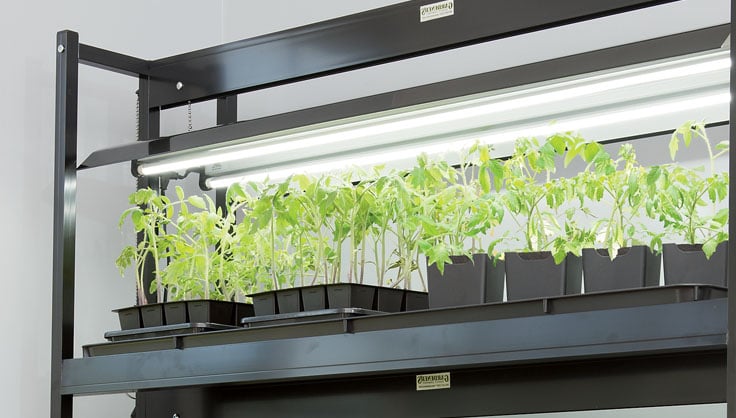


Far weaker than most plants need for healthy growth. In comparison to specialized grow lights or the light emitted from the sun, regular LEDs are incredibly weak. The light intensity isn't strong enough.You can't compare, and contrast, all you can do is guess or hope for the best, and that's a genuinely rubbish way of doing it. They also won't give the data needed when thinking about growing plants with them.
#Indoor grow lights for seedlings full
Regular LEDs are very energy efficient, come in almost all shapes and sizes, and give out little heat but can still provide levels of full spectrum light for plant growing.īecause most people buy these bulbs just to light up a space, most manufacturers won't tell you how they're getting their bulbs to produce white light. Light Emitting Diode or LEDs are currently the most commonly sold bulb in many parts of the world. However, fluorescent bulbs are often an awkward shape, only fitting special tube fixtures, and are more expensive, and although they give off blue light, most give less red. They have a long lifespan and don't generate as much heat but still produce a high amount of light using less energy. Sometimes known as T5 bulbs, these are a step up from the last two. Expensive to run, heat generators and poor amounts of blue wavelengths. These are smaller and can be brighter than incandescent bulbs, but they have similar drawbacks. Incandescent lights are not efficient and generate a lot of heat when used, meaning you have to keep them further away from your plant's foliage to prevent it from burning.Īdditionally most produce very little blue light (which I've already shown above is necessary for a healthy houseplant). These bulbs were used almost everywhere 30 years ago, but they're now increasingly rare. But did you know some bulbs are better than others at helping to grow plants? Let's take a quick look from worst to best and why. You may have spare bulbs and a light fixture or two ready to be repurposed for your indoor gardening efforts.


 0 kommentar(er)
0 kommentar(er)
